When you hear “product samples,” you may automatically think of display items that allow customers to see, feel, and test out an item before purchasing. But in this post, we’ll be talking about requesting product samples for you, the retailer.
Before we get into the details of requesting samples, let’s take a quick look at a few of the most common scenarios for requesting samples:
- Finding brands to stock in your retail or ecommerce store
- Finding suppliers to develop and manufacture your product designs
- Finding brands or products to sell through your dropshipping website
Many suppliers let you request samples so you can inspect the product before committing to a larger, more expensive order.
Investing in product samples is one of the smartest moves fledging retailers can make.
Requesting samples helps you ensure each order for your store is a worthwhile investment for you and your customers.
You can determine if an item fits your brand, meets your quality standards, and will live up to your customers’ expectations.
Here’s everything you need to know about requesting product samples for your retail business.
What are product samples?
Product samples let you touch, feel, and try products from a potential supplier before you place a larger order or start production. Depending on whether you design your own products and then work with a manufacturer to bring them to life or stock products from other brands, you can request samples during different stages of the development process.
For example, if you design your own products, you may review a few rounds of samples before approving the design and fit for production. If you’re placing an order with a local designer, you may only need to see the final product (that has already been approved by the designer) of each item you’re considering for your retail store before you purchase inventory. And if you have a dropshipping store, you could request samples from online vendors before deciding if you’ll list them in your shop.
As a designer, requesting samples lets you perfect your products before you go to market. And if you’re buying products from other brands or suppliers, requesting samples essentially means you get to try them before you buy. This way, you can make sure the quality, fit, and style meet your standards.
Why is requesting samples important?
If you’re a new retail entrepreneur, determining if you should request product samples is a no-brainer. The short answer? Always.
Ultimately, the cost of requesting samples will always be a more worthwhile investment over taking the chance on a full order you haven’t had the opportunity to inspect.
If you do the latter, you may be stuck with a large number of products that lack the right level of quality.
Here’s an example:
Three samples cost $200, with a $50 shipping fee, equaling $250. The minimum quantity for an order of that product is 500. At even $2 per unit, that’s $1,000, without shipping included. If the product is defective or doesn’t live up to your standards, it’s better to spend the $250 rather than being out an entire $1,000.
So, in the grand scheme of things, requesting samples allows you to check the quality of the product to really ensure it’s a good fit for your retail space.
Plus, you’ll be able to get a good idea of what your long-term experience will be like with a supplier.
The benefits of requesting samples don’t stop there. You can also put your samples to good use by using them in your product photos for your online store and/or on display in your brick-and-mortar retail space.
💡PRO TIP: If you’re still not in a place where you can invest in product samples, some suppliers will list links to coupons and free samples on their product pages.
10 steps for requesting samples
Not sure how to request samples? Use this list as a guide, and as you get more familiar with each of your suppliers’ processes, you can tweak it.
1. Create a list of potential suppliers. You can’t request samples until you have a handful of suppliers or brands that you’re interested in ordering from. Create a list of potential suppliers before you do anything else.
2. Contact potential suppliers. Most suppliers or brands list contact information for ordering samples or inventory on their websites. Get in touch to ask about their sample request process (assuming it’s not already spelled out on their site).
3. Request samples. Each supplier will have a slightly different process for requesting samples, but in most cases you’ll always have to detail the article number and other specifications, like quantity, size, and color. Some brands or suppliers may have SKU numbers that you can use when placing sample requests.
4. Pay for samples. Again, the process may vary, but before suppliers send samples, they’ll likely ask you to pay. Or in some cases, brands will send samples for your review and request that you return them at your own cost.
5. Supplier or brand ships samples. When a supplier or brand ships samples to your office or store address, they’ll usually provide a tracking number. If they don’t, ask for one so you know when to expect it.
6. Samples arrive. Now comes the fun part. The samples arrive at your office or retail store (quick tip: let your supplier know the package was delivered and that you’ll follow up soon).
It’s important to review the product samples in detail for quality, and also to try them on or test them to make sure they fit or function well.
If you’re working with a supplier to manufacture products you’ve designed, the process of requesting and reviewing samples is more rigorous and usually requires a few rounds before you can approve the samples for production.
7. Share feedback with the supplier. After you review and test the product samples, send feedback to the supplier via email. Again, this process is more detailed if you’re designing products and working with a supplier to manufacture them. You can provide comments about various changes and improvements that must be made for the next round of development samples.
But if you’re requesting samples from a brand that you’re considering stocking in your retail store or online, there’s less room to change the products.
Your constructive feedback is still helpful, but implementing those changes is harder. The brand may suggest a different—more suitable—product for your store based on your comments.
8. Confirm pricing. Now that you’ve provided feedback, it’s essential to make sure you’re on the same page when it comes to pricing. Do the changes you requested lead to an increase in unit prices when you place your order? Will design changes affect lead times?
These are the types of questions to ask if you’re working with a supplier to manufacture your own products. But as we mentioned, if you’re stocking products from various brands in your retail store, you’ll have less control over adapting the products based on your comments about the samples. Wholesale pricing is less likely to change.
9. Final negotiations. If you’re buying products from other brands, you may be able to negotiate free shipping or 10% off your first wholesale order. Some brands also have incentives if you increase the total order quantity.
If you’re working with a supplier to manufacture your product designs, this is a good time to negotiate unit costs, lead times, minimum order quantities (MOQs), and any other loose ends.
10. Choose your supplier. Now that you’ve requested and reviewed samples, approved them, and negotiated the terms with the suppliers or brands, it’s time to make a choice. You may work with multiple suppliers to manufacture your own products, and if you’re stocking other brands, you’ll likely have a few favorites that you buy from regularly.
Where to look for suppliers and brands
When it comes to requesting samples, where you look for them depends on your specific situation. Let’s review the three scenarios we mentioned earlier:
- Requesting samples for products you designed
- Requesting samples from brands
- Requesting samples for your dropshipping website
1. Requesting samples for products you designed
There are many ways to source product suppliers and manufacturers. You can use sites like Maker’s Row to search for factories, materials, and services to help bring your product designs to life. If you prefer to source suppliers in person, there are various trade shows you can attend in the US and internationally to meet potential suppliers, view samples, and request samples on the spot. Some of the most well known ones are the Apparel Sourcing Show, Magic, and Texworld.
2. Requesting samples from brands
You can also use most of the resources listed above to source and request samples from brands you may want to stock in your retail store or online. But if you’re looking for smaller, local brands, you could search for them on Etsy, Instagram, or wholesale marketplaces like Faire, and at pop-up events like American Field or American Handcrafted for handmade products.
3. Requesting samples for your dropshipping website
Alibaba and AliExpress are popular online suppliers for dropshipping businesses. These companies are two of the largest ecommerce companies in the world, equipped with a broad range of products that connect you to suppliers from around the world. But since they provide such a broad range of information and products, navigating these sites isn’t the easiest. Here’s how you can request samples from each one:
Requesting samples on Alibaba
Option 1: Type the product you’re looking for in the search bar, and in the navigation, click “All suppliers.” This will provide you with a list of suppliers that specialize in manufacturing the product.
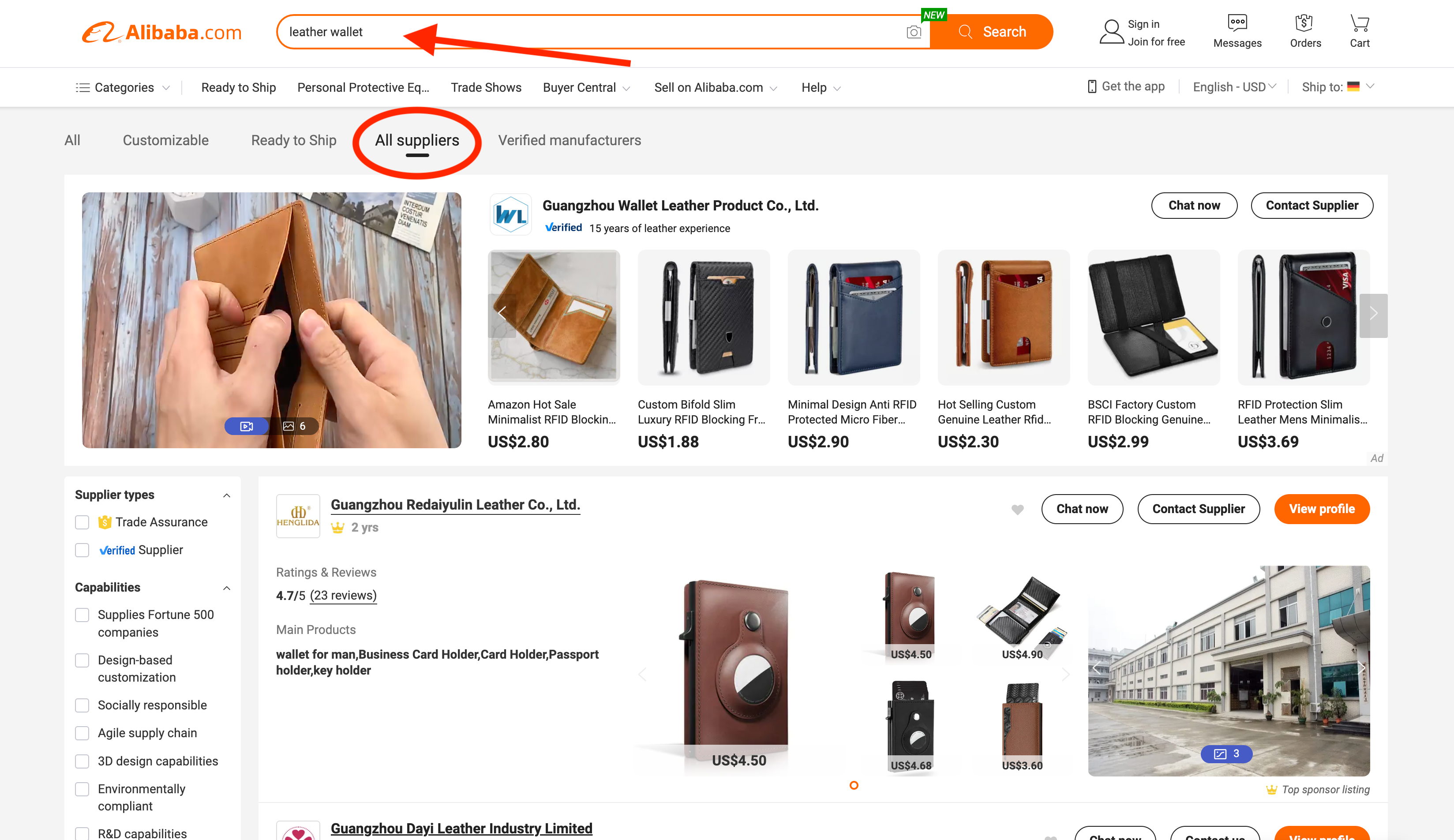
Then, message the supplier directly with specific details about what you need. Starting a direct conversation with the supplier will help you determine if the product is within your budget and meets all of your requirements. If so, you’ll then be able to finalize and place your order.
Option 2: In your profile, you’ll see a Request for Quotation (RFQ) tool that allows you to pinpoint suppliers that can provide you with the product you’re looking for.
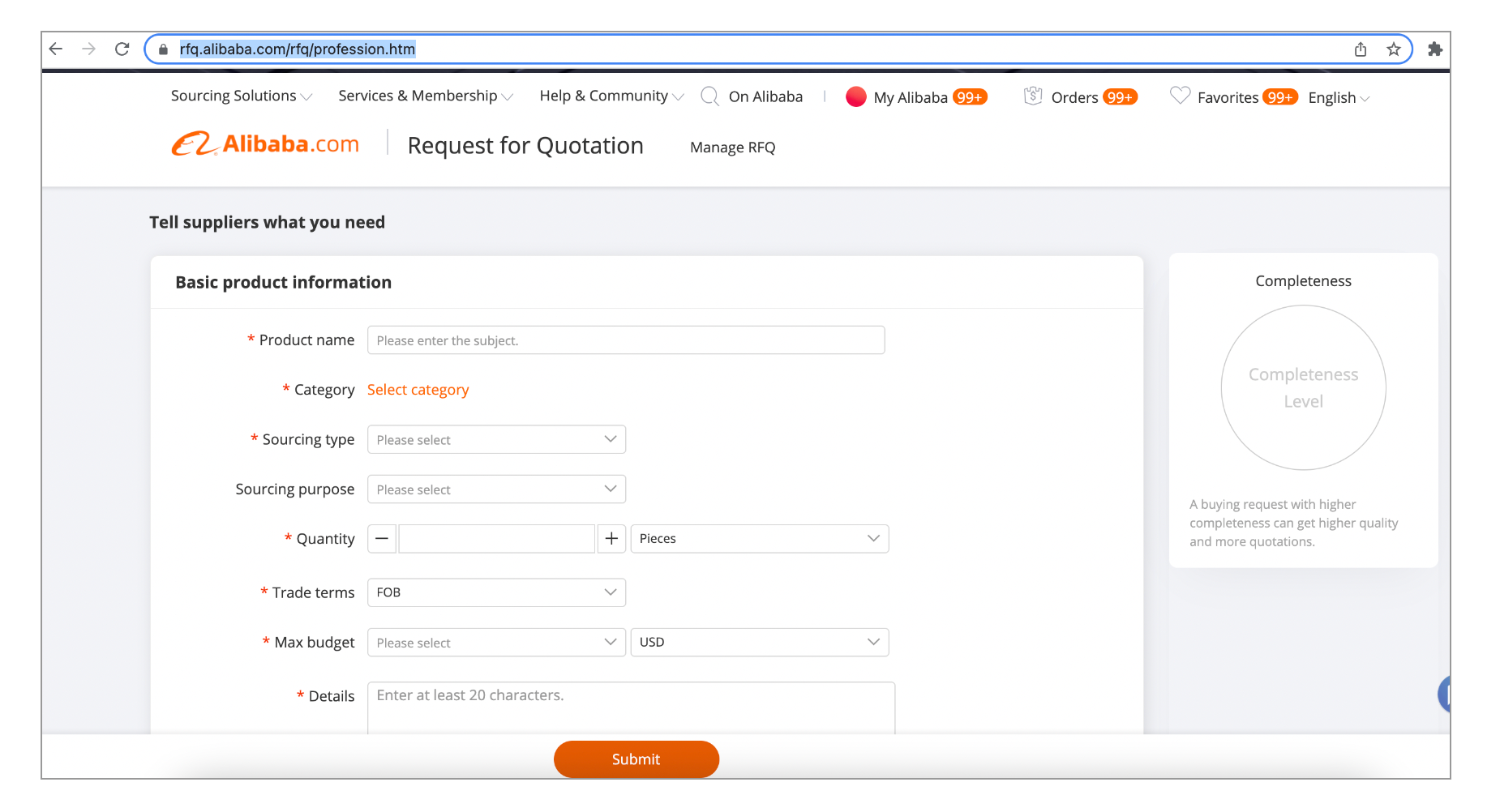
To submit an RFQ, you’ll be prompted with a form where you’ll include the keywords of the product you’re looking for, the category, the quantity, and other specifications. You can even upload images to further help the supplier understand the product you’re seeking. You can also provide the preferred unit price, payment method, and more.
Once your RFQ is submitted, it will be sent to the applicable suppliers, who then choose to respond with a quote tailored to your needs.
Requesting samples on AliExpress
Although Alibaba is the parent company, AliExpress does not provide the same options listed above. With AliExpress, you’ll need to do a product search for what you’re looking for.
Step 1. Type in the name of the product you’re searching for and click on one of the featured products for more information.
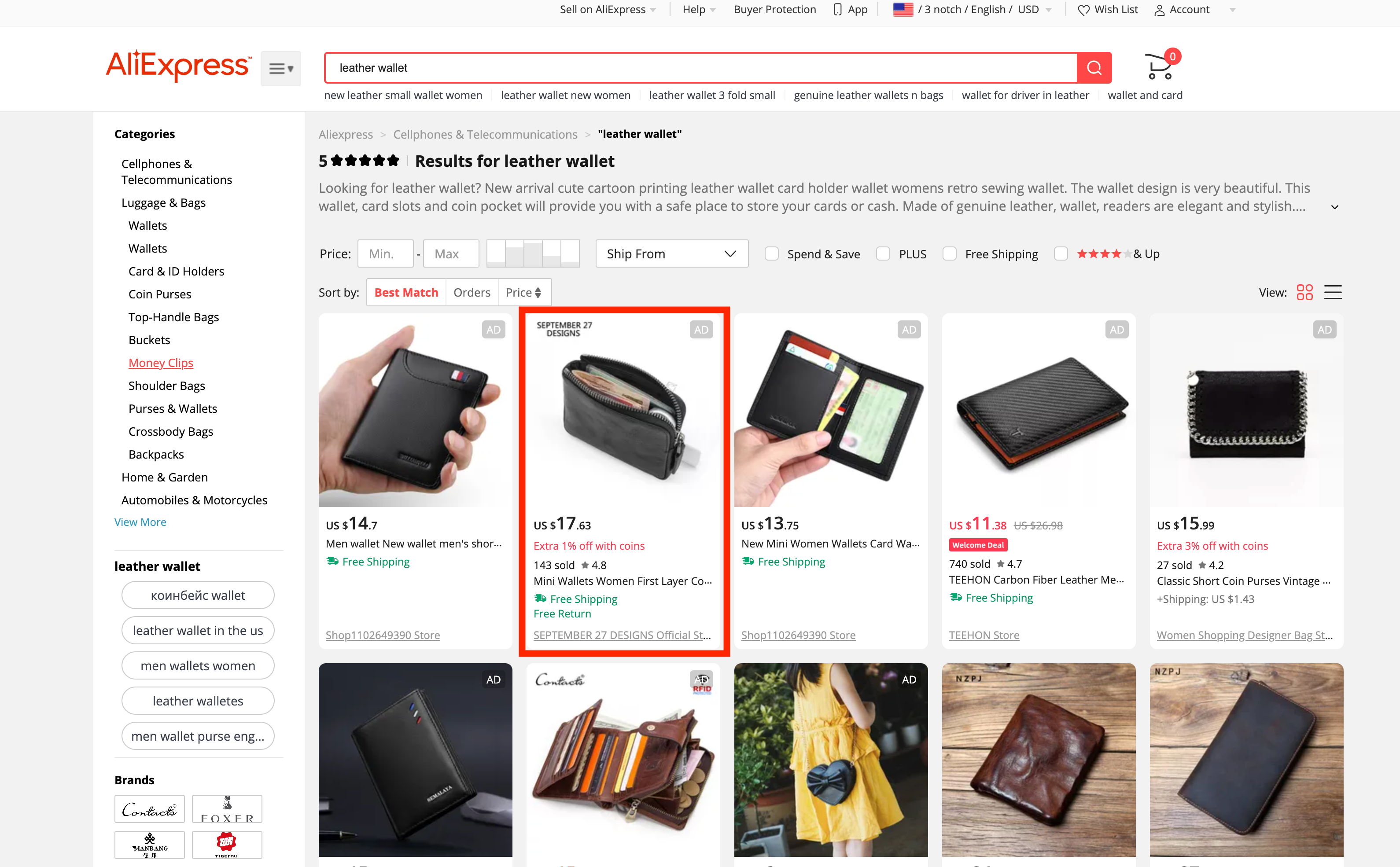
Step 2. Scroll down to find more information about the specific supplier. Click “Visit Store” to see all its products.
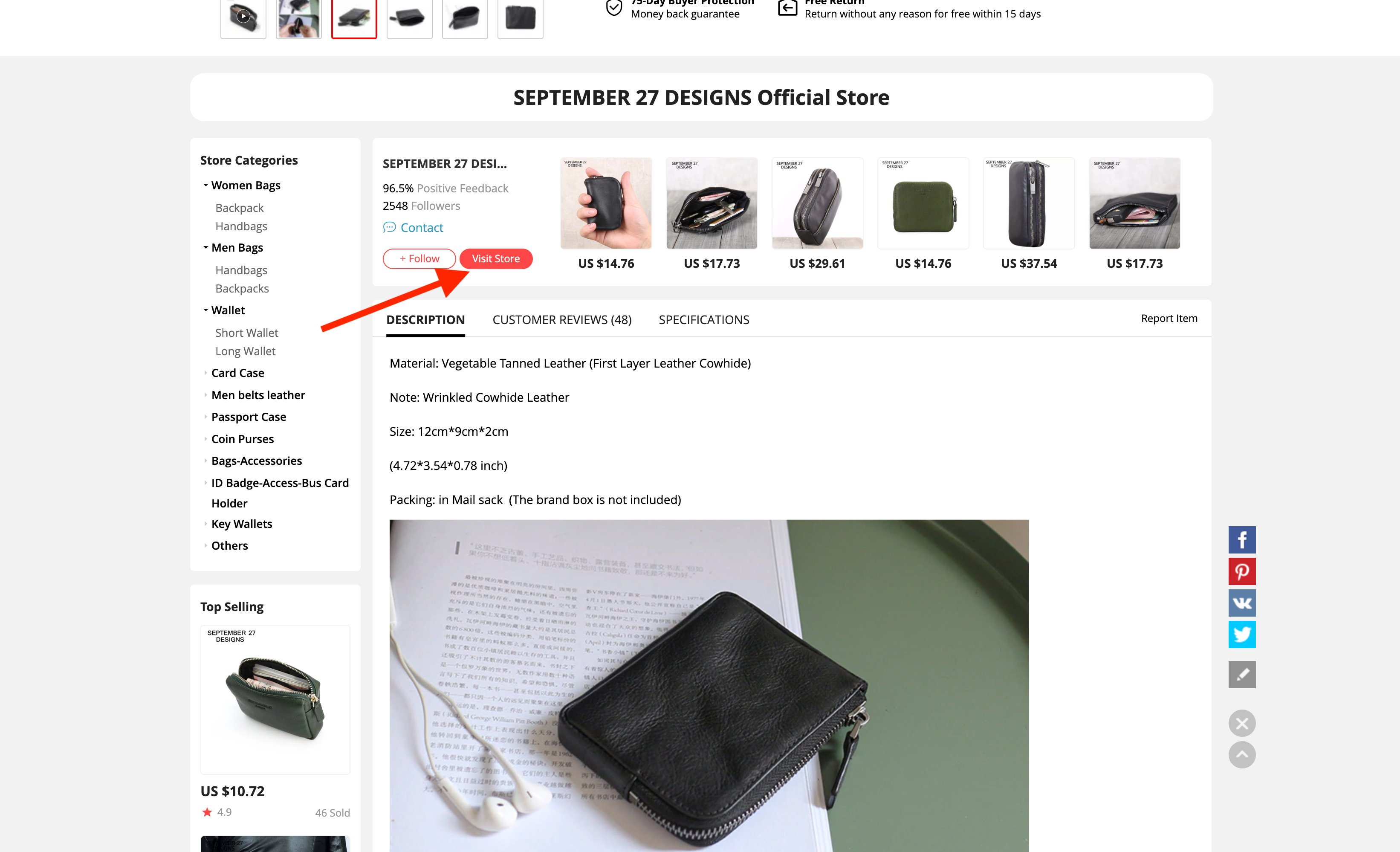
Step 3. Contact the seller directly to discuss requesting product samples.
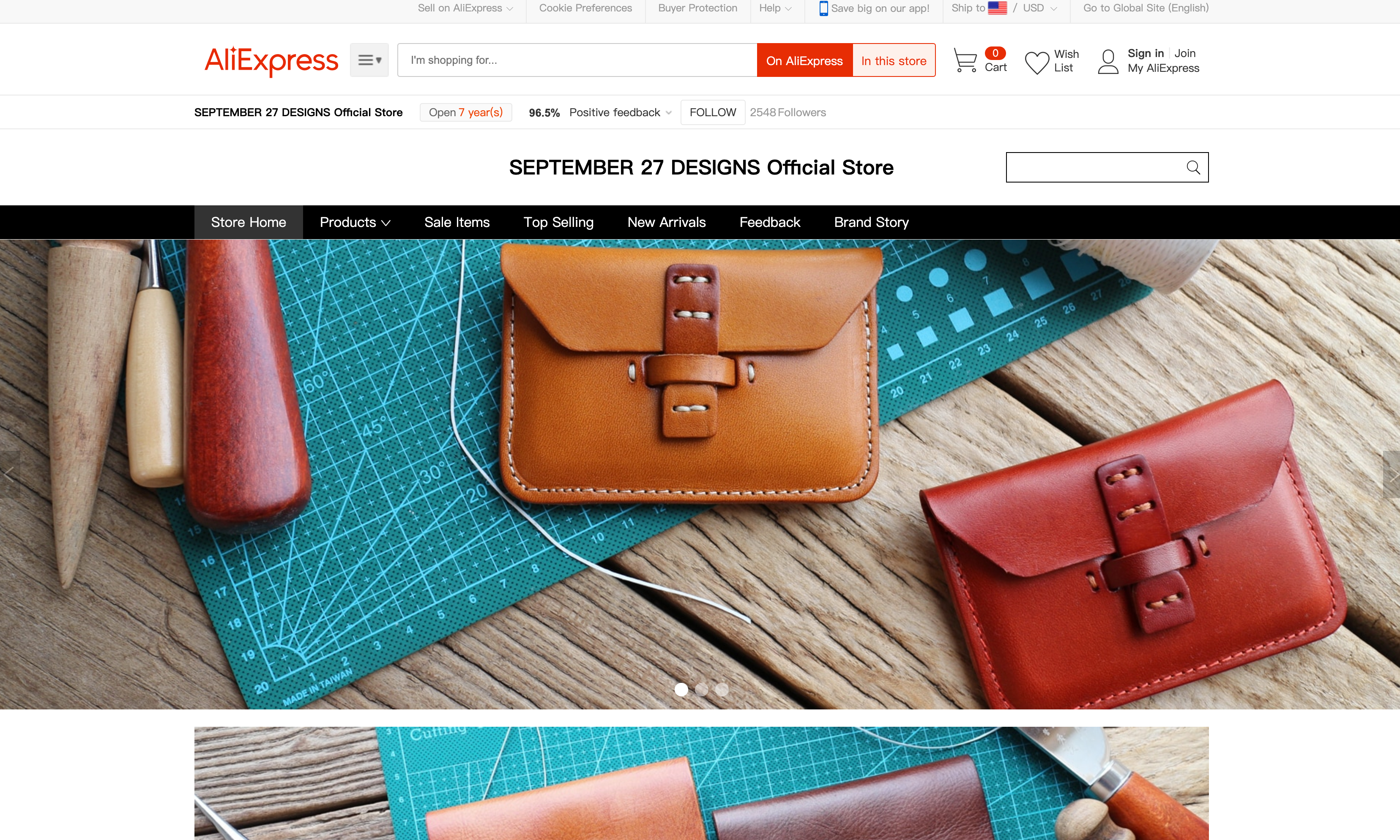
Use the feedback tab on each supplier’s page to see its ratings. Many buyers provide detailed reviews, equipped with photos of what their product looked like upon receiving it. This will help you narrow down the suppliers you’d like to further discuss an order with.
📚Further reading: AliExpress Dropshipping: A Complete 2023 Playbook—Shopify
What’s the best way to contact a supplier?
Always contact a supplier before making a purchase so you can discuss exactly what you need and verify that their product listing’s information is correct. When you start crafting your message to a supplier, keep in mind the volume of inquiries suppliers are receiving on a daily basis. That’s why it’s important to be specific in your message.
Each correspondence also needs to be concise and clearly constructed, so you can come across as a serious buyer, rather than someone with a general inquiry—otherwise, your message might be overlooked.
Here’s what to include in your message to a supplier when requesting product samples:
- The information of the product you’re referencing
- The number of product samples you wish to receive
- Your shipping address
- Whether you need any customization to the product
- A clear statement that you’re specifically requesting samples
What you should keep in mind when requesting samples
First things first: Always request samples from more than one supplier. When you start your search for the perfect product supplier, make a list of the top three to five that meet your needs and order samples from each of them.
Once you’ve received your samples, you’ll then be able to make a well-calculated decision for which supplier you should use for that specific product.
Also, consider requesting product samples in different variations—like different colors and styles—to help you find the perfect product (and supplier) for your retail business.
💡PRO TIP: Purchasing more than one sample of a specific product allows you to compare each for shipping and quality consistencies.
What you should look for when you receive product samples
When you receive your product samples, first study how each item was shipped—it will reflect how you’ll receive a larger order. This is also why you should order more than one product sample from a supplier, in case there’s damage to the box during the shipping process.
If each box from one supplier has damage, you might be able to infer that a larger order will have the same characteristics. If only one box is damaged, you can probably chalk it up to a shipping mishap.
Upon opening the package, thoroughly inspect the quality of the product sample.
If your box did have damage, see if the product was affected. Then look to see how the product compares to the listing when it comes to color, quality, and the listing’s product specifications. This will also help you determine how a product will look in your store and if it meets your (and your customers’) needs.
Lastly, test the sample to ensure it lives up to any claims or specifications—this will help keep negative reviews at bay and customers happy.
How to know if a supplier is right for you
Once you’ve received your product sample, it’s time to decide on a supplier. When you’re working with overseas supplier websites like Alibaba and AliExpress, that decision-making process can be a bit convoluted.
First, think about the experience you’ve already had with the supplier, from your first correspondence to receiving the product.
This might be a direct reflection of what your relationship will be like when placing larger orders to sell in-person or in your store.
Here’s what else to consider when deciding on a supplier for your retail business:
- Price. What’s included in the price? Verify the product cost per unit, delivery costs, and any additional fees.
- Quantity. Does the minimum order quantity align to your needs? If not, try to gently negotiate with the supplier to lower the number to what works best for you.
- Production. How long will it take to fulfill your order? Knowing this ahead of time will save you a lot of headaches in the future.
- Payment terms. How do you pay for your order? It’s important to remember that you should never pay upfront, at least after your first order. Usually, most suppliers ask for 30% upfront and 70% upon receiving the order. Also ask about how they accept payments, as this will help you determine if the supplier is legitimate or a scam.
💡PRO TIP: If the supplier seems too good to be true, they might be. That’s why you should always stick to suppliers who’ve been verified through the marketplace’s site.
Moving forward with requesting samples
Using online marketplaces to find and request product samples for items you’d like to sell in your store is a smart step to providing items that will make your customers happy—and keep coming back.
And if you’re equipped with the ins and outs of the purchasing process, you’ll be well on your way to success as a new retail entrepreneur.
Additional research and content from Alexis Damen.
Read more
- The Science of Free Samples: How Freebies Keep Customers Coming Back For More
- Product Assortment: Strategies and Tips for a Winning Product Mix
- How To Source Fabric For Your Clothing Line Business
- What Is Economic Order Quantity and How Can I Calculate It?
- Retail Markdowns 101 for Shop Owners
- What Causes Shipping Delays? How They Impact Retailers and How to Deal With Them
- What Is Last Mile Delivery Logistics?
- How to Calculate Beginning Inventory & Give Stock a Dollar Value
- 10 Ways On-Demand Manufacturing Can Help Retailers Streamline Their Operations
- Keeping Up With Demand: Tactics to Boost Productivity And Get Orders Out on Time
Requesting samples FAQ
How do you get product samples?
There are a few different ways to get product samples. You can contact a company directly and ask for samples, attend trade shows to receive samples from vendors, join product testing panels, or search for free sample offers online.
What are product samples called?
Product samples are sometimes referred to as "trial samples," "promotional samples," or "free samples."
How do I request a product sample from a supplier?
To request a product sample from a supplier, you should contact them directly. Most suppliers have contact forms or phone numbers listed on their websites. When you contact them, explain what product sample you are interested in and how you would like to receive it. Be sure to provide your contact information so they can respond to your request.
Do suppliers charge for samples?
It depends on the supplier. Some suppliers may not charge for samples, while others may charge a nominal fee to cover the cost of materials, shipping, and other expenses.





